43 label the parts of the skin and subcutaneous tissue.
Chapter 6 Worksheet Flashcards - Quizlet Label the parts of the skin and subcutaneous tissue Label the layers of the skin top to bottom: - stratum corneum - stratum lucidum - stratum granulosum - stratum spinosum - stratum basale - dermis Label the cell types found in the skin Drag each label to the appropriate layer (A, B, or C) for each term or phrase. Layers of the Skin | Anatomy and Physiology I - Lumen Learning The hypodermis (also called the subcutaneous layer or superficial fascia) is a layer directly below the dermis and serves to connect the skin to the underlying fascia (fibrous tissue) of the bones and muscles. It is not strictly a part of the skin, although the border between the hypodermis and dermis can be difficult to distinguish.
The Skin and Subcutaneous Tissue | Basicmedical Key Hypodermis (Subcutaneous Fat, Panniculus Adiposus) Fatty tissue is the deepest part of the skin, separating it from the underlying muscle fascia or the periosteum. It plays an important role in thermoregulation, insulation, storage of energy, and protection from mechanical injuries.
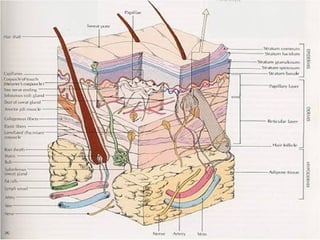
Label the parts of the skin and subcutaneous tissue.
WebMD - Better information. Better health. The skin is the largest organ of the body, with a total area of about 20 square feet. The skin protects us from microbes and the elements, helps regulate body temperature, and permits the ... Anatomy and Physiology Homework Chapter 6 Flashcards - Quizlet The skin consists of two layers: a stratified squamous epithelium called the epidermis and a deeper connective tissue layer called the dermis. Below the dermis is another connective tissue layer, the hypodermis, which is not part of the skin. The skin is equipped with a variety of nerve endings that react to heat, cold, touch, texture, pressure, The Skin and Subcutaneous Tissue | Schwartz's Principles of Surgery ... Components of epithelial, connective, vascular, muscular, and nervous tissue are organized into three histologic layers (epidermis, dermis, and hypodermis), which vary in consistency between various body parts ().The thickness of each layer, distribution of dermal appendages, density and type of nerve endings, and melanocyte distribution are just some of the variables that differ by location ...
Label the parts of the skin and subcutaneous tissue.. › subjects › the-anatomy-andThe anatomy and physiology of the skin nose mouth eyes ... 1.1 The skin is the largest organ of the body and it acts as a waterproof protector for all the internal organs and it consist of four distinct layers: The epidermis‚ the basement membrane zone‚ the dermis and the subcutaneous layer. The epidermis which is the outer layer and is a protective multi-layered self-renewing structure which ... › articles › 325845Nucala: Side effects, alternatives, uses, and more Jun 13, 2019 · Nucala (mepolizumab) is a prescription medication that’s used to treat severe eosinophilic asthma and eosinophilic granulomatosis with polyangiitis (EGPA). It comes as a prefilled autoinjector ... Subcutaneous Tissue Function and What Can Impact Its Health : the epidermis, dermis, and subcutaneous tissue. Epidermis. The outermost layer of your skin is made up of overlapping cells that provide a waterproof barrier and protection from the outside... en.wikipedia.org › wiki › DermatophyteDermatophyte - Wikipedia Some of these skin infections are known as ringworm or tinea (which is the Latin word for "worm"), though infections are not caused by worms. It is thought that the word tinea (worm) is used to describe the snake-like appearance of the dermatophyte on skin. Toenail and fingernail infections are referred to as onychomycosis. Dermatophytes ...
Function And Structure of Skin And Subcutaneous Tissue - Earth's Lab The skin is connective tissue that consists of cells, fibers and an extracellular matrix. The epidermis is the thin outer layer of skin, the dermis is the thicker inner layer of skin. Beneath the dermis, lies a layer of loose connective tissue called subcutaneous tissue or the hypodermis deeper tissues including muscles, tendon, ligament, joint capsule and bone lie beneath the subcutaneous ... › articles › fosamaxFosamax (alendronate): Uses, side effects, dosage, and more Jun 20, 2022 · Fosamax (alendronate) is a prescription drug that’s used for bone conditions such as osteoporosis. Learn about side effects, dosage, alternatives, and more. Anatomy, Skin (Integument), Epidermis - StatPearls - NCBI Bookshelf Skin is the largest organ in the body and covers the body's entire external surface. It is made up of three layers, the epidermis, dermis, and the hypodermis, all three of which vary significantly in their anatomy and function. The skin's structure is made up of an intricate network which serves as the body's initial barrier against pathogens, UV light, and chemicals, and mechanical injury ... CHAPTER 4 Skin and Subcutaneous Tissue Flashcards - Quizlet outer layer skin dermis or corium inner layer, attached to hypodermis or subcutaneous layer fat adip/o, lip/o scaly, squamous squam/o vessel vascul/o black melan/o cell -cyte keratin hard, horny - kerat/o strata layers striae stretch marks -ferous pertaining to eccrine glands
(Get Answer) - Label the parts of the skin and subcutaneous tissue ... Label the parts of the skin and subcutaneous tissue. Piloerector muscle Tactile corpuscle Dermal... Label the parts of the skin and subcutaneous tissue. Piloerector muscle Tactile corpuscle Dermal papilla Hair follicle Sebaceous gland Blood capillaries Hair bulb Feb 23 2022 02:13 PM Solution.pdf Expert's Answer Solution.pdf ods.od.nih.gov › factsheets › VitaminK-HealthVitamin K - Health Professional Fact Sheet This is a fact sheet intended for health professionals. For a reader-friendly overview of Vitamin K, see our consumer fact sheet on Vitamin K.. Introduction "Vitamin K," the generic name for a family of compounds with a common chemical structure of 2-methyl-1,4-naphthoquinone, is a fat-soluble vitamin that is naturally present in some foods and is available as a dietary supplement []. Solved Label the parts of the skin and subcutaneous tissue. - Chegg Question: Label the parts of the skin and subcutaneous tissue. Piloerector muscle Tactile corpuscle Dermal papilla Hair follicle Sebaceous gland Blood capillaries Hair bulb This problem has been solved! See the answer Show transcribed image text Expert Answer 100% (12 ratings) recorder.butlercountyohio.org › search_records › subdivisionWelcome to Butler County Recorders Office Copy and paste this code into your website. Your Link Name
Subcutaneous Tissue: Composition, Function, Structure Several structures and specialized cells exist within the subcutaneous tissue. These include: Collagen and elastin fibers (these attach the dermis to muscles and bones) Fat cells Blood vessels Sebaceous glands Nerve endings Hair follicle roots
Skin and Subcutaneous Tissue Service Line This course covers procedures performed on the skin, subcutaneous tissue, fascia, and breast over 4 lessons. In lesson 1, the anatomy and function of structures pertinent to these parts of the body is discussed. This paves the way for discussion of procedures and coding guidelines for procedures performed on the skin, subcutaneous tissue, fascia, and
Skin Anatomy: The Layers of Skin and Their Functions Subcutaneous tissue is the innermost layer of the skin. It is mostly made up of fat, connective tissues, larger blood vessels, and nerves. 5 The majority of your body fat is stored in the subcutaneous layer. It not only insulates you against changing temperatures but protects your muscles and internal organs from impacts and falls.
(Get Answer) - Label the parts of the skin and subcutaneous tissue. 0. ... Label the parts of the skin and subcutaneous tissue. 0.22 Cutaneous blood vessels Book Hypodermis Sweat pores Epidermis Hairs Dermis Lamellar corpuscle Sweat gland Draw the structure of pyruvate, showing its appropriate structure at pH 7.4. What does the top pressure gauge in the figure read? Expert's Answer Solution.pdf Next Previous Q: Q: Q: Q:
› articles › zoladexZoladex (goserelin): Side effects, uses, alternatives, and more Jan 14, 2022 · Zoladex is a subcutaneous implant inserted once every 4 weeks or 12 weeks. Zoladex is implanted below the navel line into the anterior abdominal wall using aseptic technique under physician ...
Anatomy: Skin and Subcutaneous Tissues Flashcards | Quizlet The dermis is the deep layer of the skin. It is composed of connective tissue. This connective tissue contains lots of blood vessels, nerves, hair follicles, and parts of glands. The connective tissue provides mechanical support, strength, and thickness to skin. epidermis is derived from... ectoderm dermis is derived from... mesoderm
The subcutaneous layer: Anatomy, composition, and functions Subcutaneous tissue is the deepest skin layer that lies closest to the muscle. This layer has other names, including superficial fascia, hypodermis, subcutis, and tela subcutanea. The skin consists...
Skin Anatomy - EnchantedLearning.com hair shaft - The part of the hair that is above the skin. ... (sweat). The gland is located in the epidermis; it releases sweat onto the skin. subcutaneous tissue - fatty tissue located under the dermis. Worksheet to Print ... soft, hot, cold, rough, smooth, grainy, sharp. Skin Anatomy Diagram to Label Label the skin anatomy diagram. Or go to ...
Subcutaneous Tissue Disorders - Dermatology Health Facts Subcutaneous tissue is defined as the deepest layer of skin, and it's largely comprised of adipose fat cells and connective tissue. This is where the majority of fat is stored in our bodies. Many times, those that are overweight or obese have a higher risk of developing subcutaneous tissue disorders. Treatments are widely available for many ...
Solved Label the parts of the skin and subcutaneous tissue. | Chegg.com Question: Label the parts of the skin and subcutaneous tissue. 0.22 Cutaneous blood vessels Book Hypodermis Sweat pores Epidermis Hairs Dermis Lamellar corpuscle Sweat gland This problem has been solved! See the answer label the parts of the skin and subcutaneous tissue Show transcribed image text Expert Answer 98% (46 ratings) A …
Skin and Subcutaneous Tissues Flashcards - Quizlet - consists of dense, irregular connective tissue - Stretch marks (striae) are tears in the collagen fibers caused by stretching of the skin due to pregnancy or obesity Hypodermis - Subcutaneous tissue that has more areolar and adipose than the dermis has - pads body and binds skin to underlying tissues
The Skin and Subcutaneous Tissue | Schwartz's Principles of Surgery ... Components of epithelial, connective, vascular, muscular, and nervous tissue are organized into three histologic layers (epidermis, dermis, and hypodermis), which vary in consistency between various body parts ().The thickness of each layer, distribution of dermal appendages, density and type of nerve endings, and melanocyte distribution are just some of the variables that differ by location ...
Anatomy and Physiology Homework Chapter 6 Flashcards - Quizlet The skin consists of two layers: a stratified squamous epithelium called the epidermis and a deeper connective tissue layer called the dermis. Below the dermis is another connective tissue layer, the hypodermis, which is not part of the skin. The skin is equipped with a variety of nerve endings that react to heat, cold, touch, texture, pressure,
WebMD - Better information. Better health. The skin is the largest organ of the body, with a total area of about 20 square feet. The skin protects us from microbes and the elements, helps regulate body temperature, and permits the ...



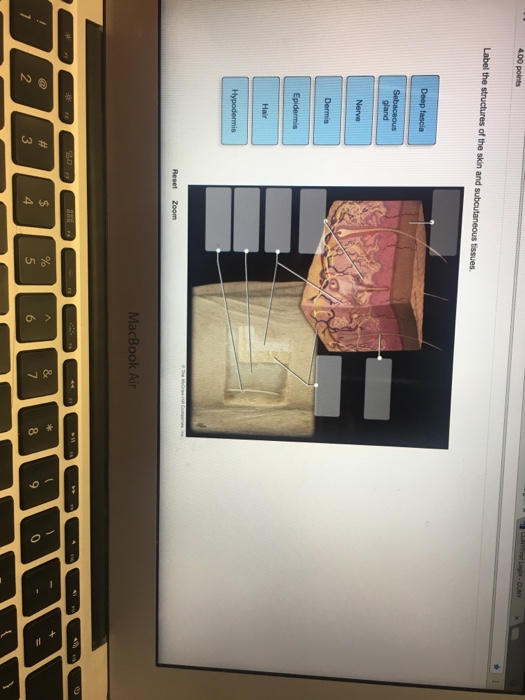


:watermark(/images/watermark_only_sm.png,0,0,0):watermark(/images/logo_url_sm.png,-10,-10,0):format(jpeg)/images/anatomy_term/tactile-corpuscle/n4zld8XMKmDkNXdwdB40ng_Meissner_s_corpuscles_02.png)




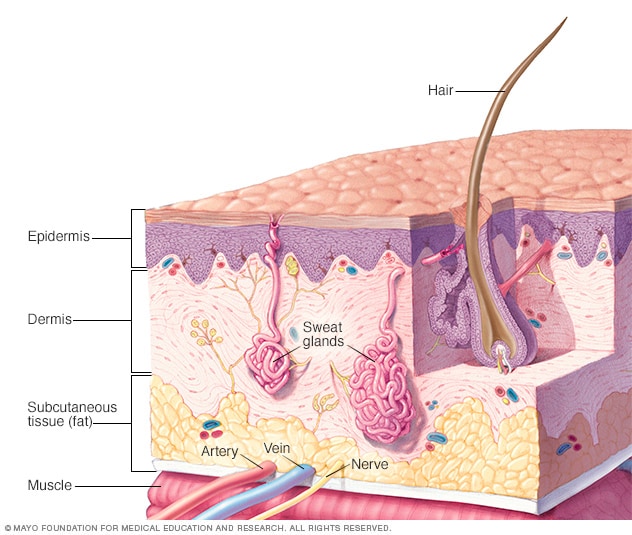


:max_bytes(150000):strip_icc()/pathology-normal1-7ad34abec63b400f9f2aa0796d39cb4f.jpg)

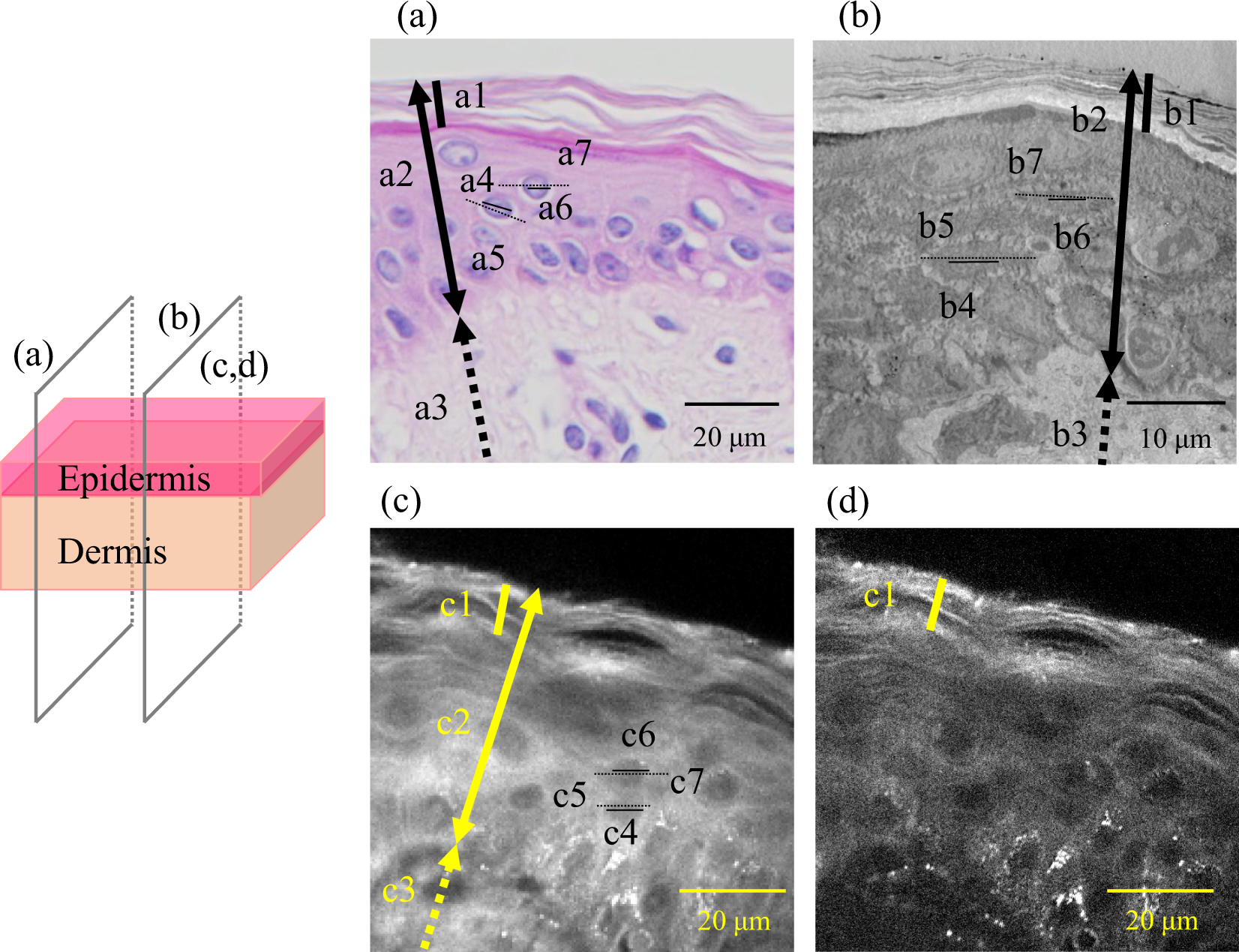


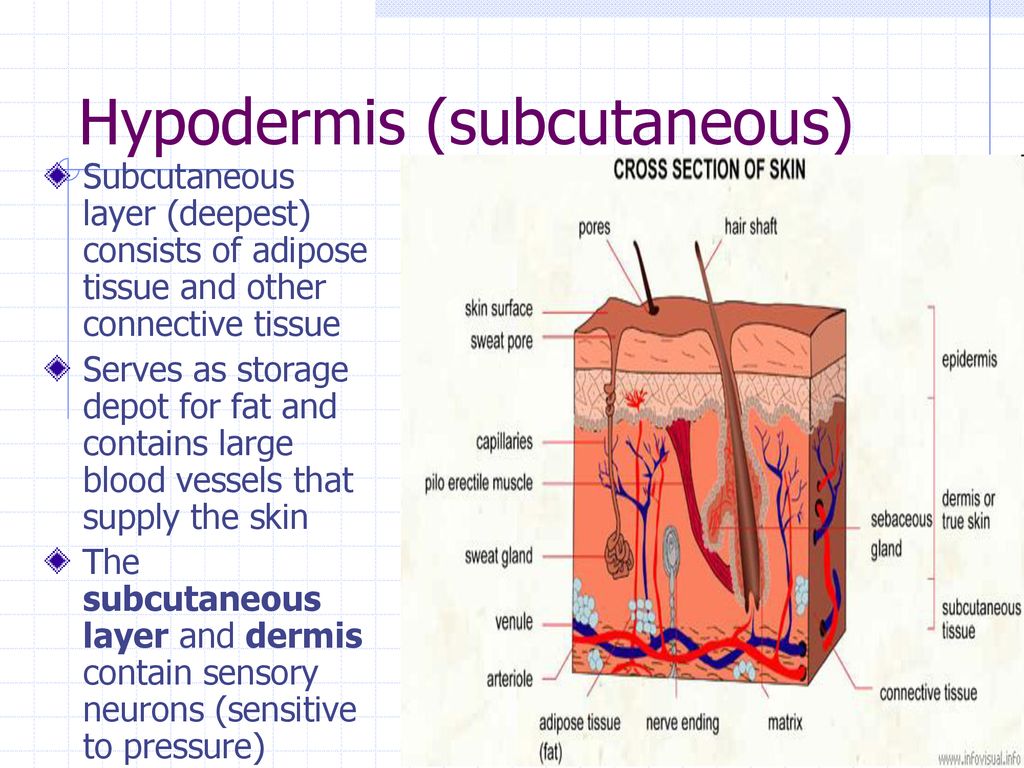

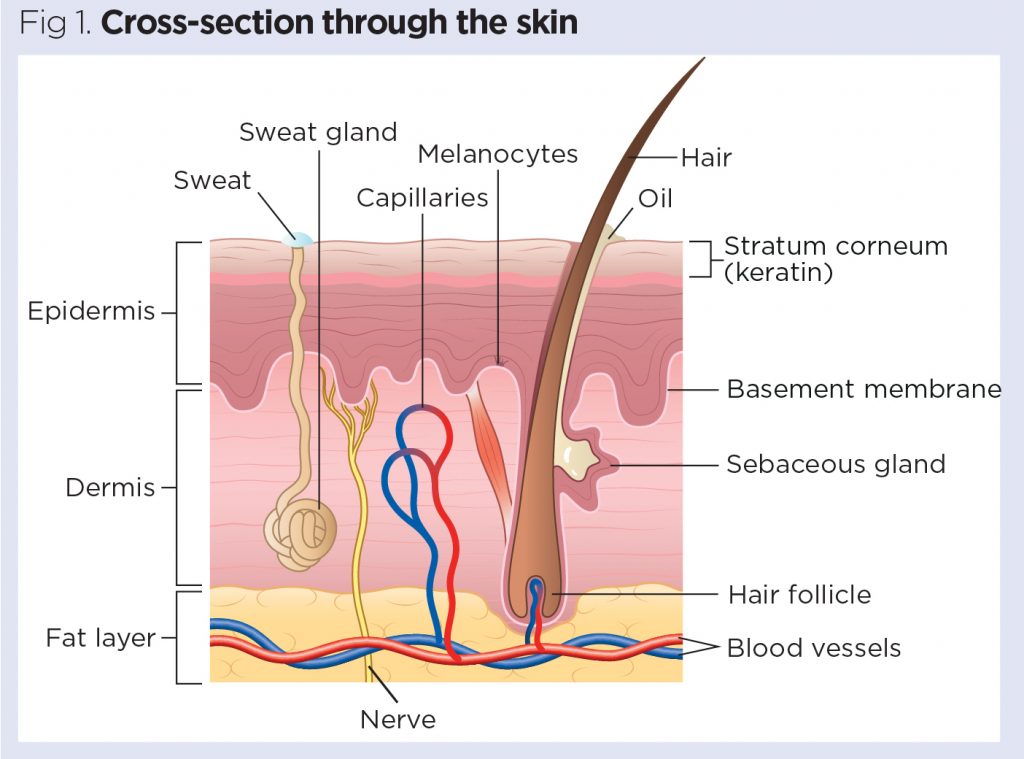
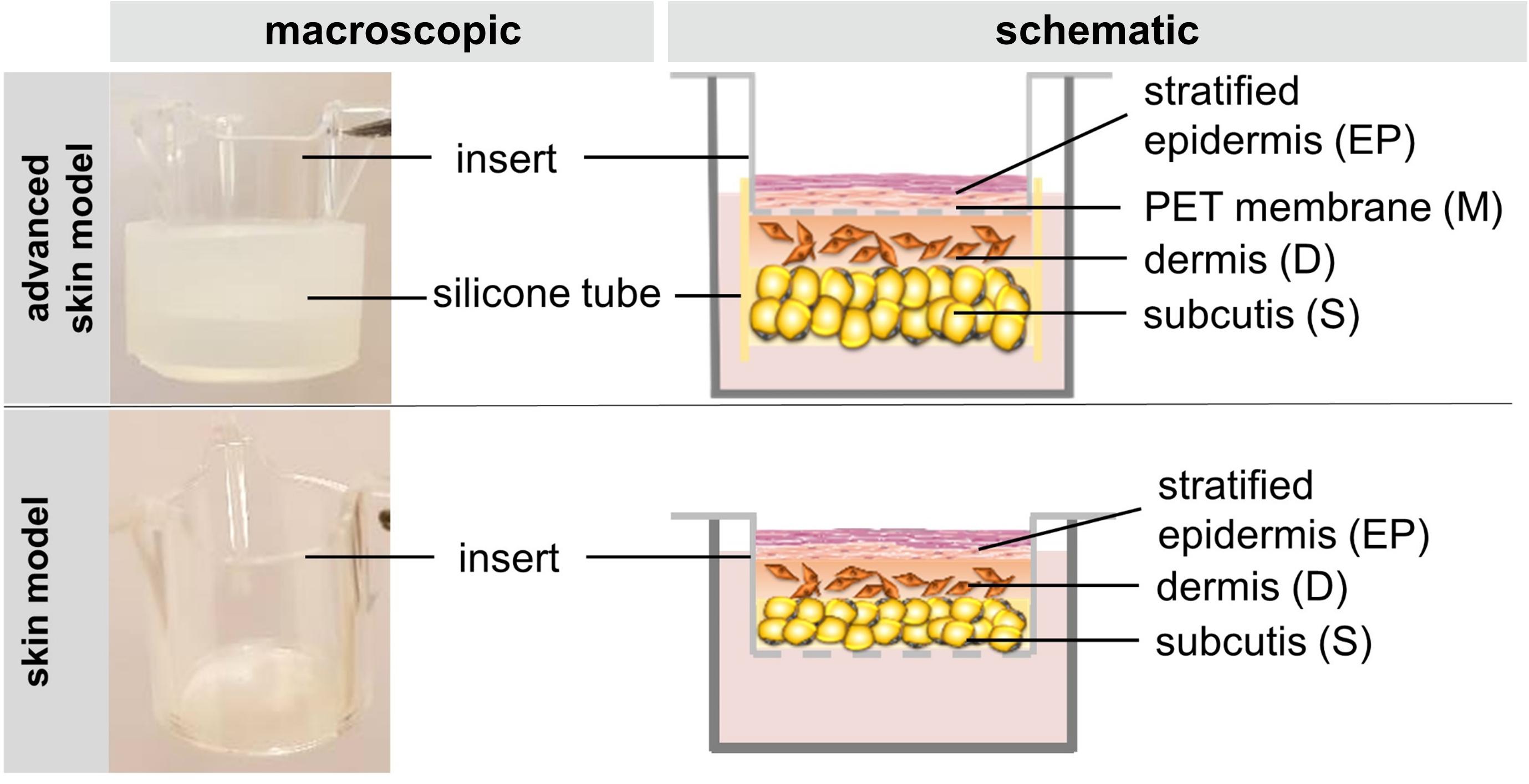







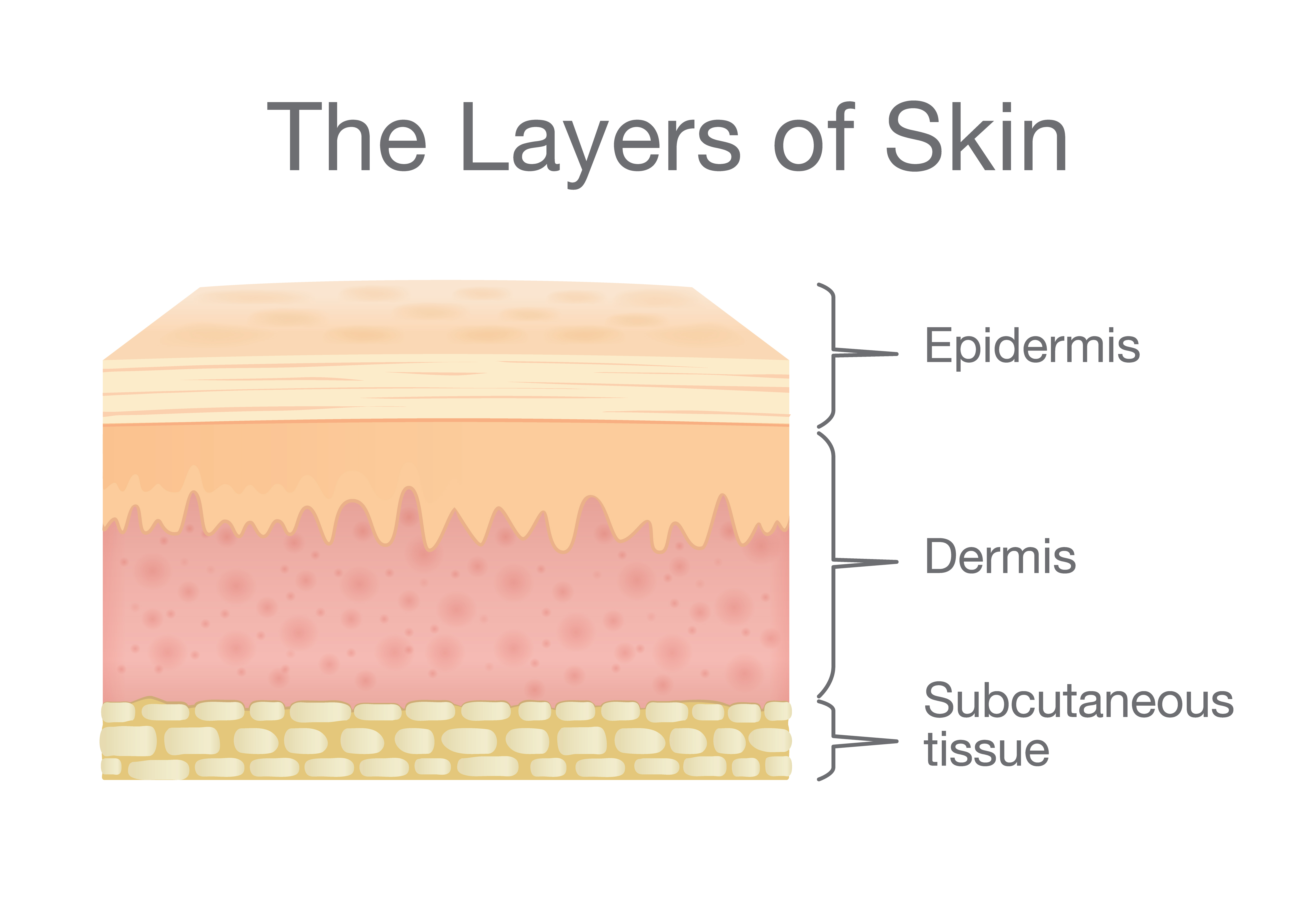



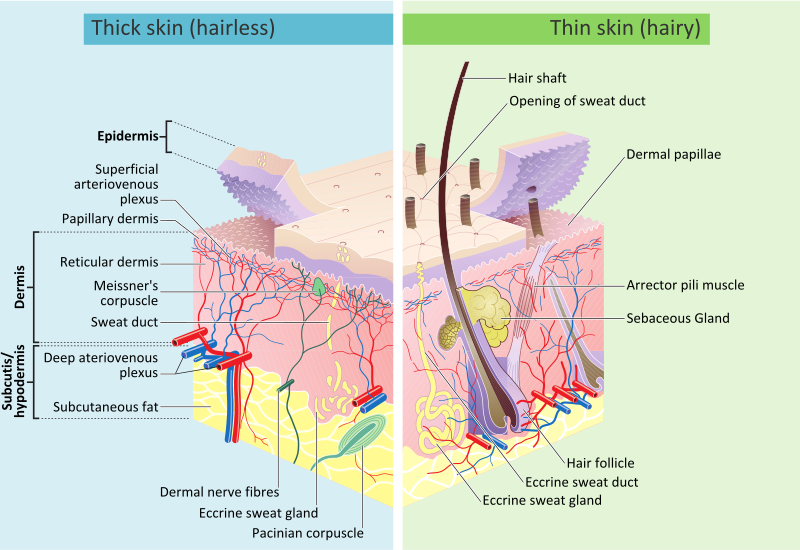
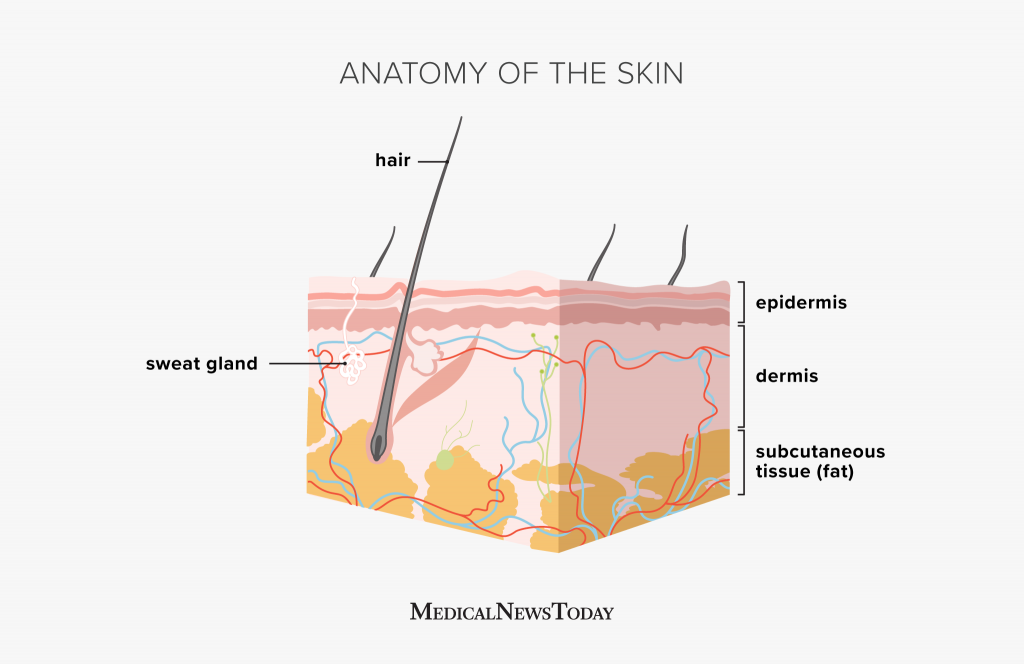



Post a Comment for "43 label the parts of the skin and subcutaneous tissue."